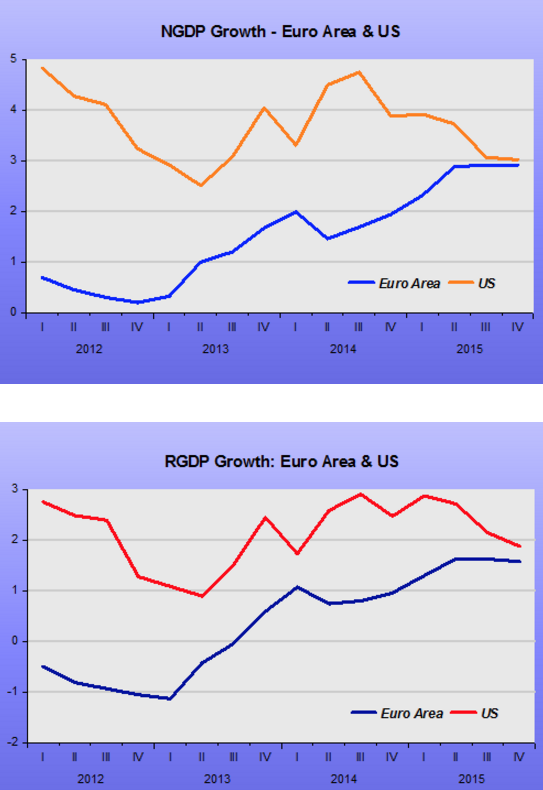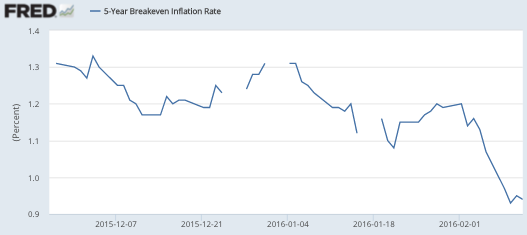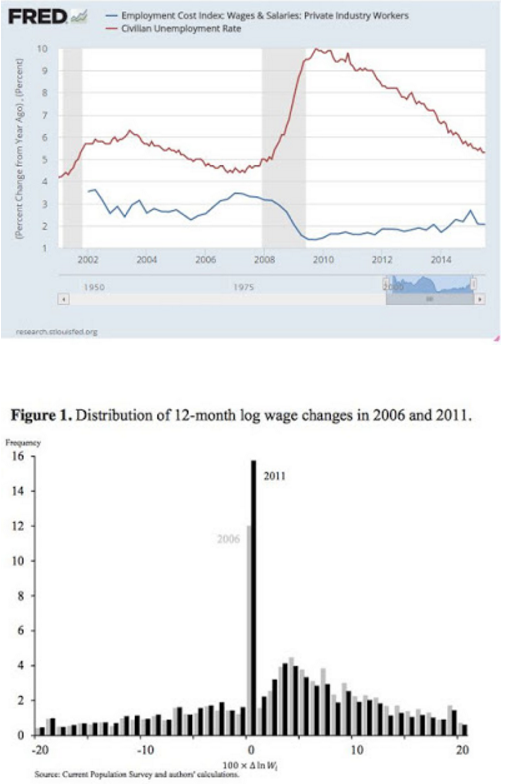[Fourth city in 5 nights. Tired. I wrote this a few weeks ago to post while traveling. I hope to respond to comments for this post and earlier posts on Sunday.]
So I started rereading the General Theory, just for the heck of it, and noticed something very interesting. Early in the book Keynes lays out the musical chairs model of the business cycle.
The General Theory begins with an appalling caricature of “classical economics”. Keynes says that the classical economists believed that unemployment was caused by sticky wages. This is true. Then Keynes suggests that the classical economists believed all unemployment was “voluntary”. The idea was (according to Keynes) that the classical economists believed that full employment could be reached at a sufficiently low wage level, and hence if there were unemployment then it must be voluntary—workers refused to take the pay cuts that would restore full employment.
This makes no sense to me, as it seems to confuse collective action and suffering at the individual level. No single automobile factory worker can regain a job by cutting his or her wages, and thus their unemployment is every bit as involuntary as if the sticky wages were caused by an Act of God. But that’s not how Keynes looked at it. Then we come to a sentence that reminds me of the style of a certain famous NYT columnist:
Obviously, however, if the classical theory is only applicable to the case of full employment, it is fallacious to apply it to the problems of involuntary unemployment—if there be such a thing (and who will deny it?).
Who will deny it? Keynes has just told us that the classical economists deny the existence of involuntary unemployment. Then why say, “Who will deny it?” Keynes wants the readers to nod their heads, and note that there’s clearly lots of involuntary unemployment 1936, it’s just that the classical economists are too dense to see the obvious.
But what is so obvious about involuntary unemployment, as defined by Keynes? We all agree that there were lots of people without jobs. We all agree that lots of them wanted to be working. We all agree that lots of them were miserable. I call that “involuntary unemployment.” But I think they were unemployed because of sticky wages, and that if workers collectively accepted lower wages then we would have had full employment in 1936. And Keynes tells us that if we hold the belief that I hold, and that many interwar economists also held, then we are not entitled to say we think there is such a thing as involuntary unemployment.
OK, so what is Keynes’s theory of unemployment? Brace yourself.
Sticky wages!
The only difference is that Keynes also believes that if workers did accept wage cuts, it would not solve the problem. Prices would also fall in response, and hence real wages would not fall. I don’t think he’s right, but the key point is that he thinks that assumption somehow magically turns “voluntary unemployment” into “involuntary unemployment.” I can’t imagine that the unemployed workers even understand that distinction, or care. Nor do I understand how the reader is supposed to think it’s “obvious” that there is one type of unemployment and not the other. Does a miserable unemployed worker look different if his plight is “voluntary” at a level that he has no control over?
It might seem I’m nitpicking, but Keynes’s entire critique of the “classical model” of unemployment falls apart once you allow for the fact that sticky wages can cause involuntary unemployment. The interwar economists had perfectly fine theories of the business cycle, and Keynes doesn’t lay a glove on them. So much for chapter 2.
In chapter 3 he argues that demand shocks cause changes in employment, and says that the “classical” economists did not realize this. The classical economists (supposedly) assumed Say’s Law held true. And yet during the interwar years the standard model of business cycles was essentially a demand shock model, although economists used different terminology in those days. Fisher did early Phillips Curve models. Pigou, Hawtrey, Cassel, and the others certainly understood that demand shocks (monetary shocks) affected employment.
I must say that Chapter 3 is beautifully written, especially section 3. But that must have infuriated the interwar economists all the more. I can’t even imagine what it would be like to be unfairly attacked by a brilliant economist with a devastating wit. Oh wait . . .
In book II things get much better. Recall that I often argue that inflation is a vague and undefined concept, which makes real GDP also hard to pin down. On the other hand I do grudgingly concede that the CPI provides a ballpark estimate of inflation. I certainly don’t think the actual rate is 8%, as some claim. Inflation estimates are accurate enough so that we know China has grown faster than Zimbabwe, despite the higher NGDP growth in the latter country. On the other hand I’ve also suggested that macroeconomists should discard inflation and real GDP, and focus on more easily measured concepts, such as NGDP, wages, and employment. Now let’s look at Keynes:
But the proper place for such things as net real output and the general level of prices lies within the field of historical and statistical description, and their purpose should be to satisfy historical or social curiosity, a purpose for which perfect precision “” such as our causal analysis requires, whether or not our knowledge of the actual values of the relevant quantities is complete or exact “” is neither usual nor necessary. To say that net output to-day is greater, but the price-level lower, than ten years ago or one year ago, is a proposition of a similar character to the statement that Queen Victoria was a better queen but not a happier woman than Queen Elizabeth “” a proposition not without meaning and not without interest, but unsuitable as material for the differential calculus. Our precision will be a mock precision if we try to use such partly vague and non-quantitative concepts as the basis of a quantitative analysis.
. . .
In dealing with the theory of employment I propose, therefore, to make use of only two fundamental units of quantity, namely, quantities of money-value and quantities of employment. . . .
We shall call the unit in which the quantity of employment is measured the labour-unit; and the money-wage of the labour-unit we shall call the wage-unit.
. . .
It is my belief that much unnecessary perplexity can be avoided if we limit ourselves strictly to the two units, money and labour, when we are dealing with the behaviour of the economic system as a whole; reserving the use of units of particular outputs and equipments to the occasions when we are analysing the output of individual firms or industries in isolation; and the use of vague concepts, such as the quantity of output as a whole, the quantity of capital equipment as a whole and the general level of prices, to the occasions when we are attempting some historical comparison which is within certain (perhaps fairly wide) limits avowedly unprecise and approximate.
Right on!! That’s exactly my view. (I did a similar post on this a year ago, with a much longer section of quotations, in case you want more context. Here I’ll explore different implications.)
So Keynes basically has a model with three components:
1. Aggregate demand shocks (NGDP shocks)
2. Sticky wage-units (sticky nominal wages)
3. Labour unit fluctuations (employment fluctuations)
Wait, that’s my musical chairs model!
This is all explained by the end of chapter 4, on page 45 of a nearly 400 page book. If I were writing the General Theory, I would have merely added that NGDP is determined by monetary policymakers, and then called it a day after 50 pages.
I probably won’t read any more, because I know what’s coming next. There will be hundreds of pages explaining what causes demand shortfalls, and monetary policy plays only a modest role in the model. Why did Keynes and I reach such different conclusions? Because I am living in a fiat money world where central banks really do determine NGDP. Indeed if they didn’t then the entire concept of inflation targeting would be nonsensical. The 2% inflation rate since 1990 would be an amazing coincidence, almost a miracle.
In contrast, Keynes lived in a gold standard world or at least in a world where countries were expected to soon return to a gold peg. In that sort of world monetary policy was much more constrained. If you go to the extreme and assume M was fixed, then explaining NGDP is all about explaining velocity. And what explains velocity? Things like interest rates and uncertainty. Here are some things that would lower V when M is fixed:
1. The public decides to save more–lowering interest rates, which lowers V.
2. Less animal spirits among businessmen, which leads to less investment, less demand for credit, lower interest rates and lower V.
3. Fiscal austerity, which lowers government borrowing, lowering interest rates and V.
4. A big inflow of foreign saving from surplus countries like Germany and China, which depressed interest rates and lowered V.
5. Wage cuts would transfer income to capitalists, which would boost saving, reduce interest rates, and reduce V.
But Keynes did not build the General Theory around the Equation of Exchange—that would not have been revolutionary. Instead he created the Keynesian cross and hinted at IS-LM. Instead of pointing out that shocks to V affect NGDP and hence (because of sticky wages) also employment, he made it seem like thrift, and bearish expectations, and austerity, and beggar-thy neighbor trade policies directly caused unemployment. He appealed to the prejudices of what he calls the “uninstructed.” These are, after all, the common sense views of most people, even politically conservative people who are not well versed in economics. Here’s Keynes:
That it [classical theory] reached conclusions quite different from what the ordinary uninstructed person would expect, added, I suppose, to its intellectual prestige.
The General Theory screams out that the uninstructed people were correct, and then whispers that they were correct for the wrong reason, and not at all when monetary offset applies. The problem here is that he was too successful. We now have several generations of reporters and politicians who think this these bearish factors are always contractionary, even when not at the zero bound.
Of course Keynes did talk about the possibility of monetary stimulus, and was pessimistic that it would be sufficient in a deep depression, for standard liquidity trap reasons (actually its more complicated, but the liquidity trap is still a necessary condition for complete monetary policy ineffectiveness.) And even if there was not a complete liquidity trap, under a gold standard the ability to print money was limited.
To summarize, Keynes started with the same basic business cycle model as I use—the musical chairs model. Combine deficient nominal spending with sticky wages and you end up with high unemployment. But he did not become a market monetarist, for two reasons:
1. He did not think that wage cuts would help, they would merely lead to further cuts in AD.
I think that’s wrong, but I also think it’s a pretty minor dispute. As a practical matter I don’t think wage cuts are a very effective solution to a collapse in NGDP. The big difference is the second distinction:
2. He did not think the monetary authority could provide adequate levels of AD (NGDP) during a depression.
There’s an interesting similarity between these two points. Keynes was very clear that excessively high real wages were a root cause on unemployment, but didn’t think nominal wage cuts would help. Keynes was very clear that inadequate spending in money terms was the root cause of labor markets being out of equilibrium, but didn’t think printing more money would (necessarily) solve the problem. So in both cases he correctly diagnosed the problem, but drew back from the obvious solution.
However I do think we need to cut him some slack here. Things looked very different in a gold standard world, and most other economists were just as confused as he was. A few such as Fisher, Hawtrey and Cassel saw the true nature of the (monetary) problem more clearly than Keynes did, but they were the exception.
I’m a bit skeptical about the utility of the Keynesian model, even in a world of constrained monetary policy. But here I need to admit that an awfully lot of very smart people see things differently than I do, so it’s at least plausible that the Keynesian model has merit as a sort of backdoor way of explaining movements in V when M is fixed, and hence as a theory of demand side business cycles under certain types of monetary regimes.
But I don’t think I’ll read anymore. I can’t bear to work though 100s of pages of convoluted (implicit) explanations for why certain shocks might impact V. If only Keynes had stopped at page 45 and said:
“So the central bank should create a NGDP futures market and target the futures price along a track rising at 4%/year. That makes the world safe for classical economics.
The end.”




